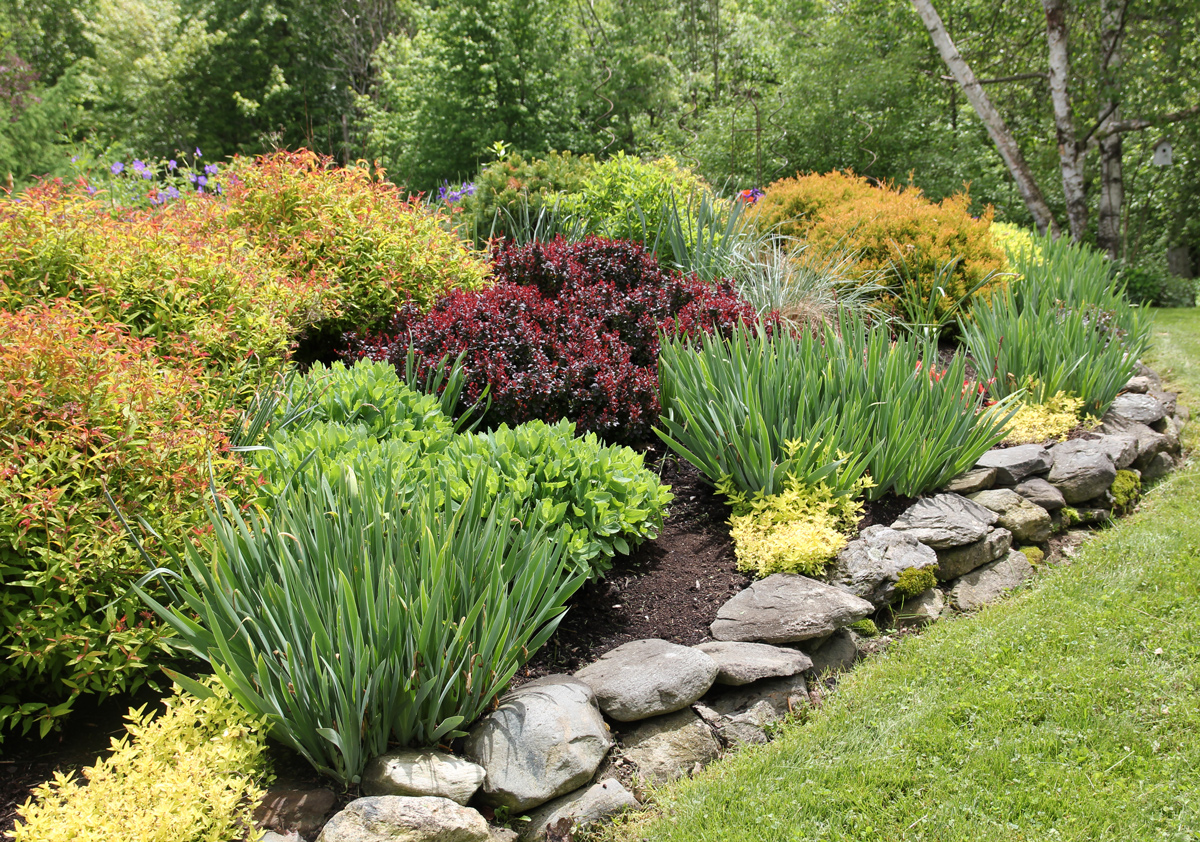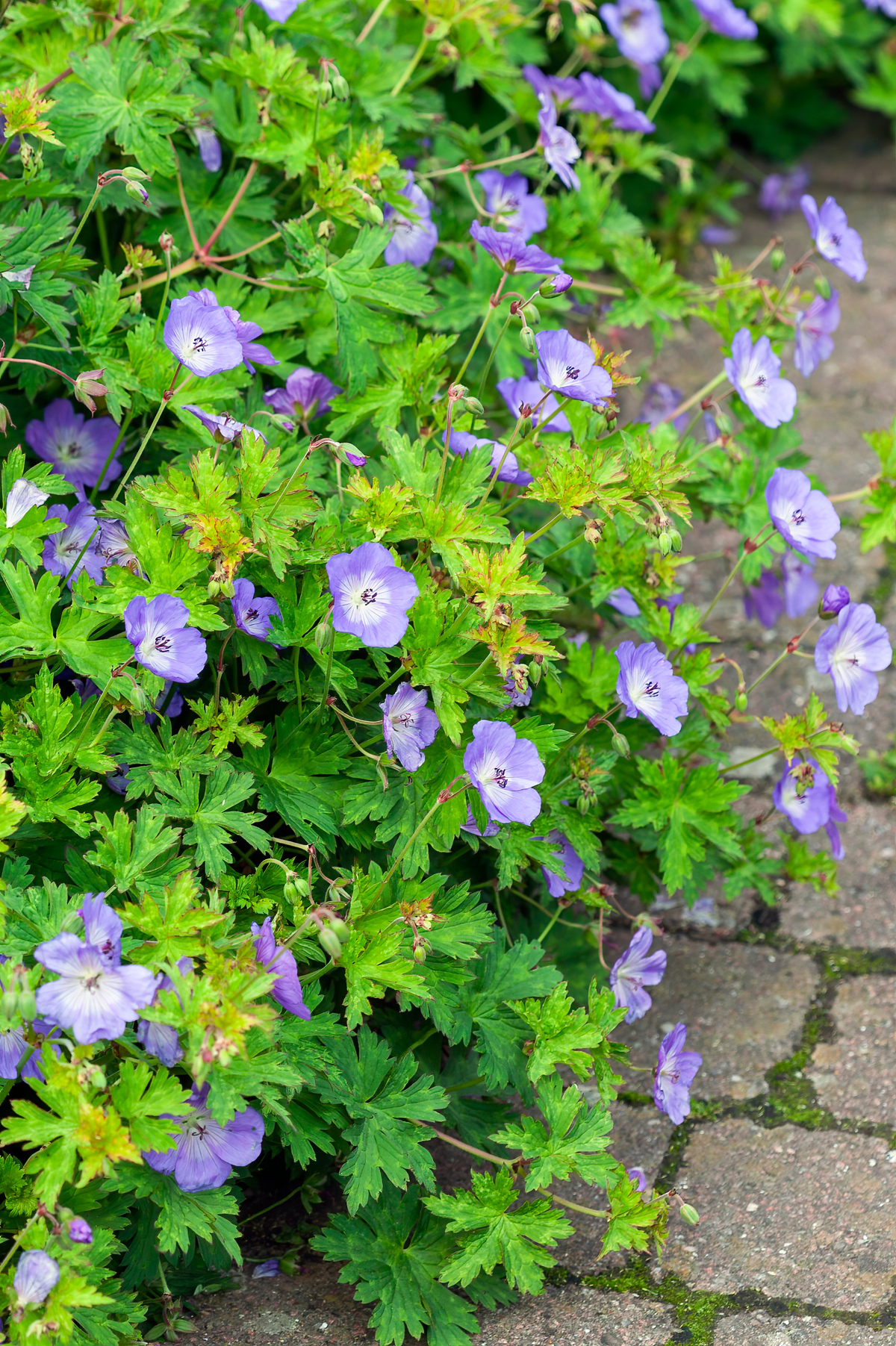Low-Growing Perennials for Sunny Gardens
Ground covers can solve a multitude of problems in and around your garden. Have an area that's rocky or too steep to mow? The right ground cover can transform it into an asset rather than an eyesore. Is there a place in your yard where the lawn often browns out? Sun-loving ground covers can be a good alternative because they need no pampering.
But ground covers are much more than just problem solvers. They can also play a valuable role in the overall design of your garden. Carpeting areas beneath other plants will introduce a new dimension of color and texture. You can use ground covers to soften the edges of a walkway or frame a garden feature such as a birdbath, bench or sculpture. Repeating some of these plants in and around your gardens will create visual continuity. In the photo below, low-growing lamb's ears, perennial geranium and candytuft are used to create a subtle rhythm within the design.
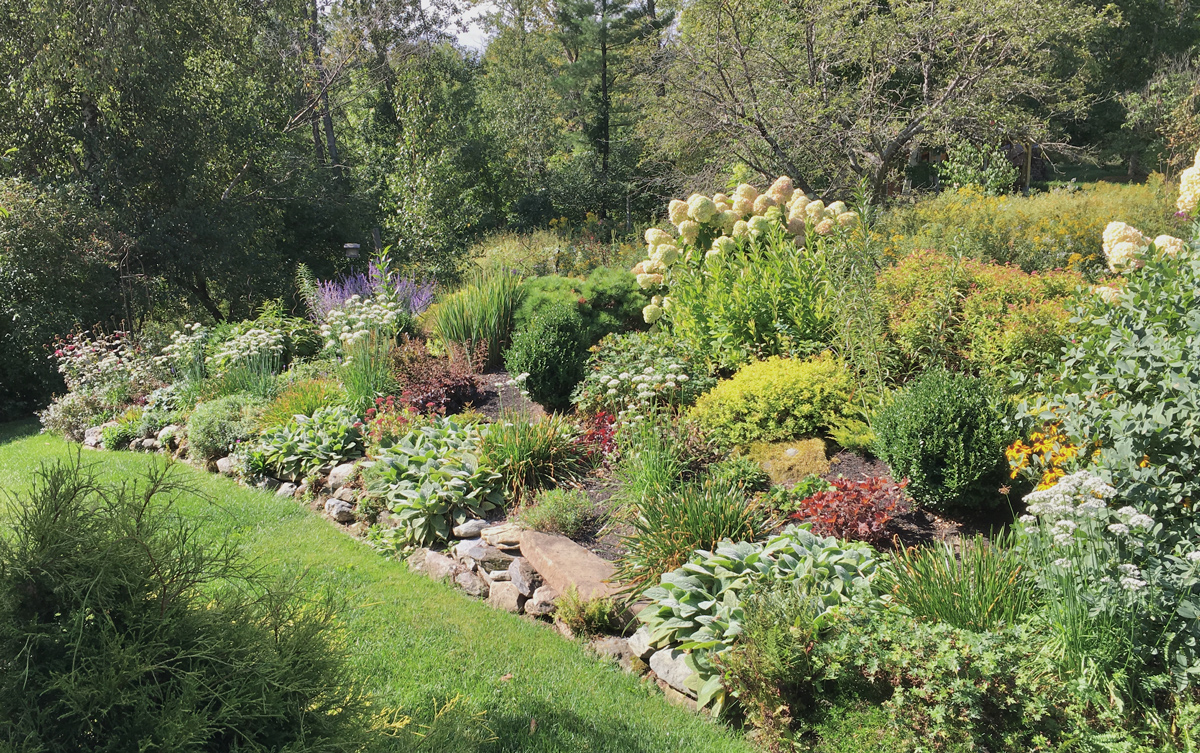
If you plan to cover relatively large area, it may take a couple years for the plants to fill in. As they do, keep the area weeded in order to minimize competition. Once the ground cover is well established, there will be little need for weeding, watering or other maintenance.
The list below features 10 popular ground covers for sun. You'll see some old favorites as well as some that may be less familiar. All are winter hardy in growing zones 4 through 8 (exceptions noted). If your yard has a mix of sun and shade, click HERE for a list of shade-loving ground covers.
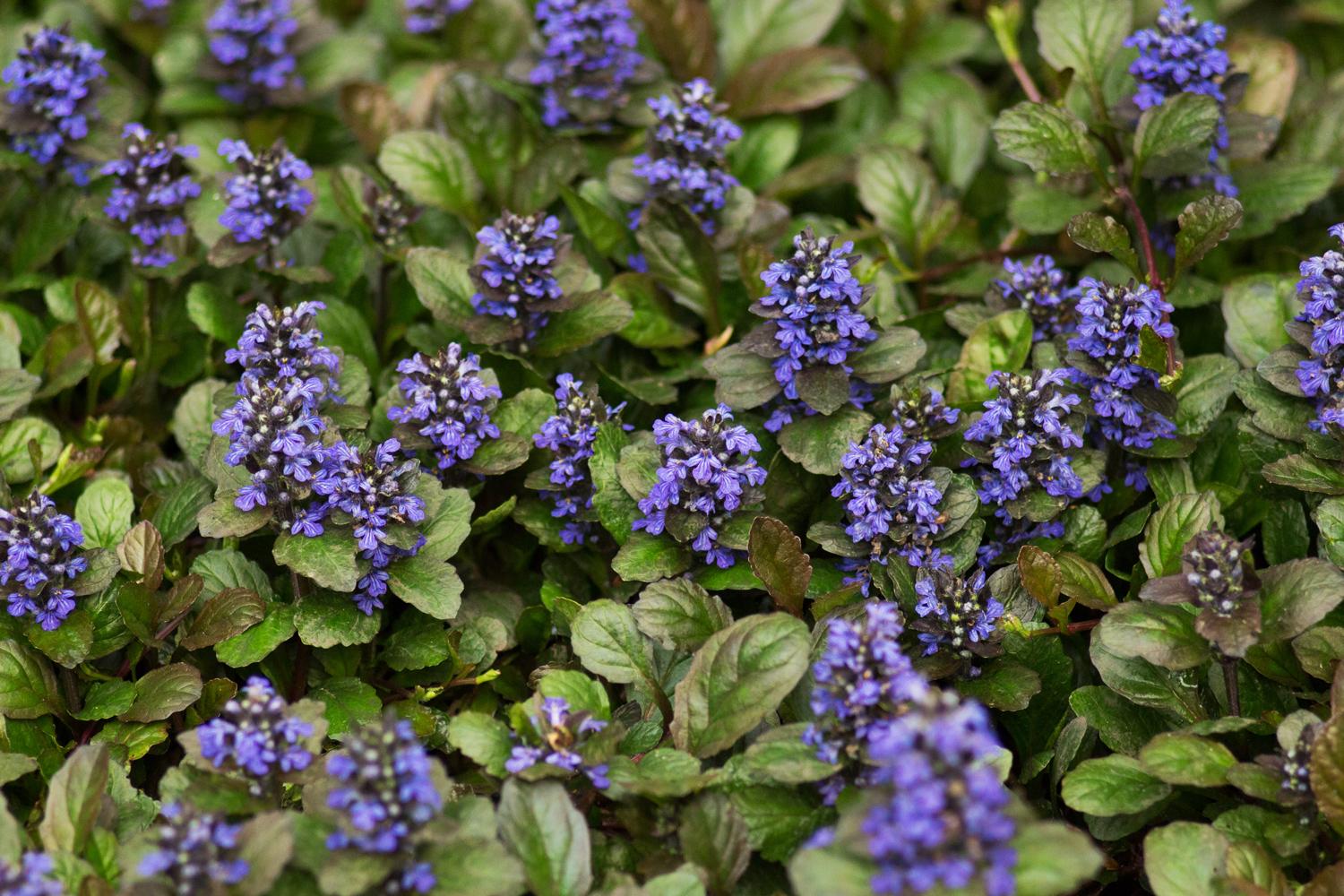
Bugleweed (Ajuga reptans)
There are several different cultivars of this rugged, long-lived perennial. Depending which one you choose, the foliage may be deep green, bronze, dark purple or golden yellow. In all but the coldest climates, ajuga's leaves retain their good looks all winter long. The midsummer flowers are purple-blue and rise well above the foliage. Tolerates dry soil but grows best with consistent moisture. Can be grown in sun or shade. Hardy in zones 3-9. Look for: 'Black Scallop,' 'Chocolate Chip,' 'Bronze Beauty' and 'Golden Glow.'
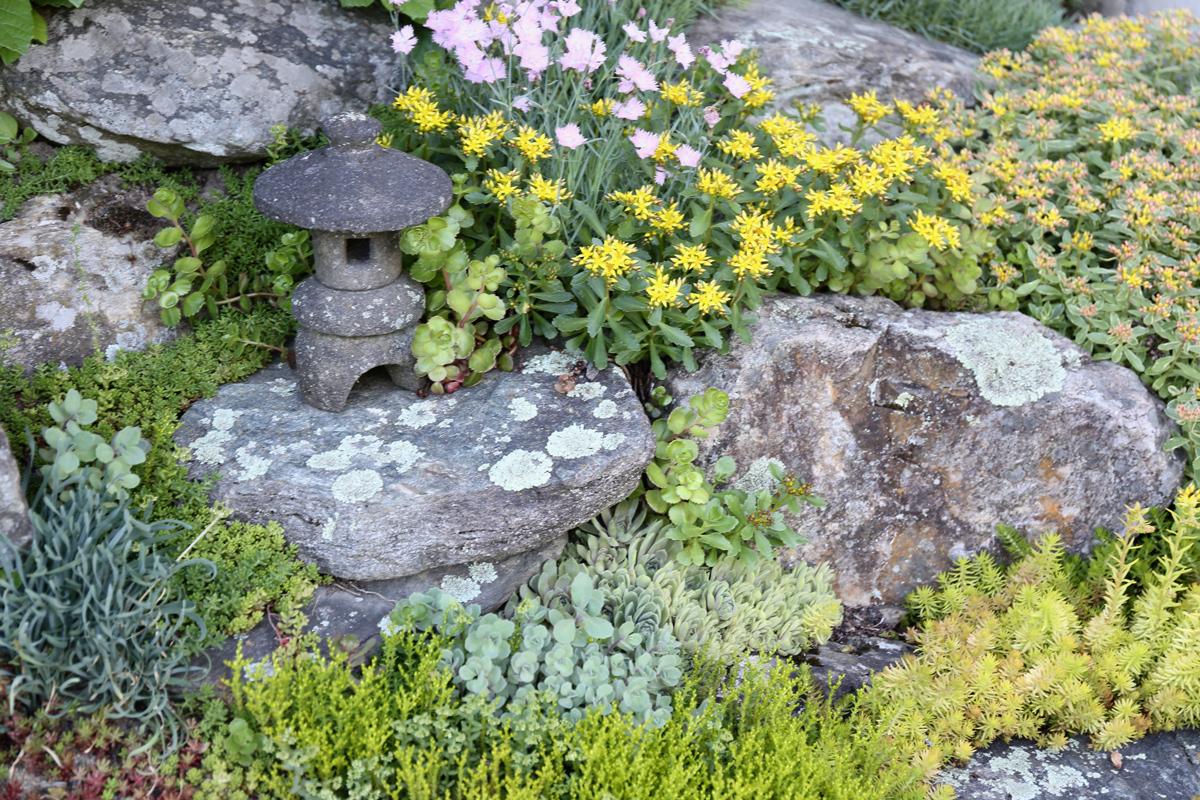
Creeping Stonecrops (Sedum spp.)
These succulent plants are grown primarily for their foliage, though most also produce pretty flowers that are very attractive to pollinators. The plants have shallow roots, so they can be grown on very thin soil. Full sun brings out the brightest foliage colors, which can be aqua, teal blue, yellow, lime green, burnt orange, red or maroon (as well as green). Sedums are evergreen, so they also provide winter interest. Most are suitable for zones 4-9. Look for: ‘Angelina’ (lime green and burnt orange), ‘Dragon’s Blood’ (red/orange), ‘Blue Elf’, ‘Lime Zinger’, and Dazzleberry.
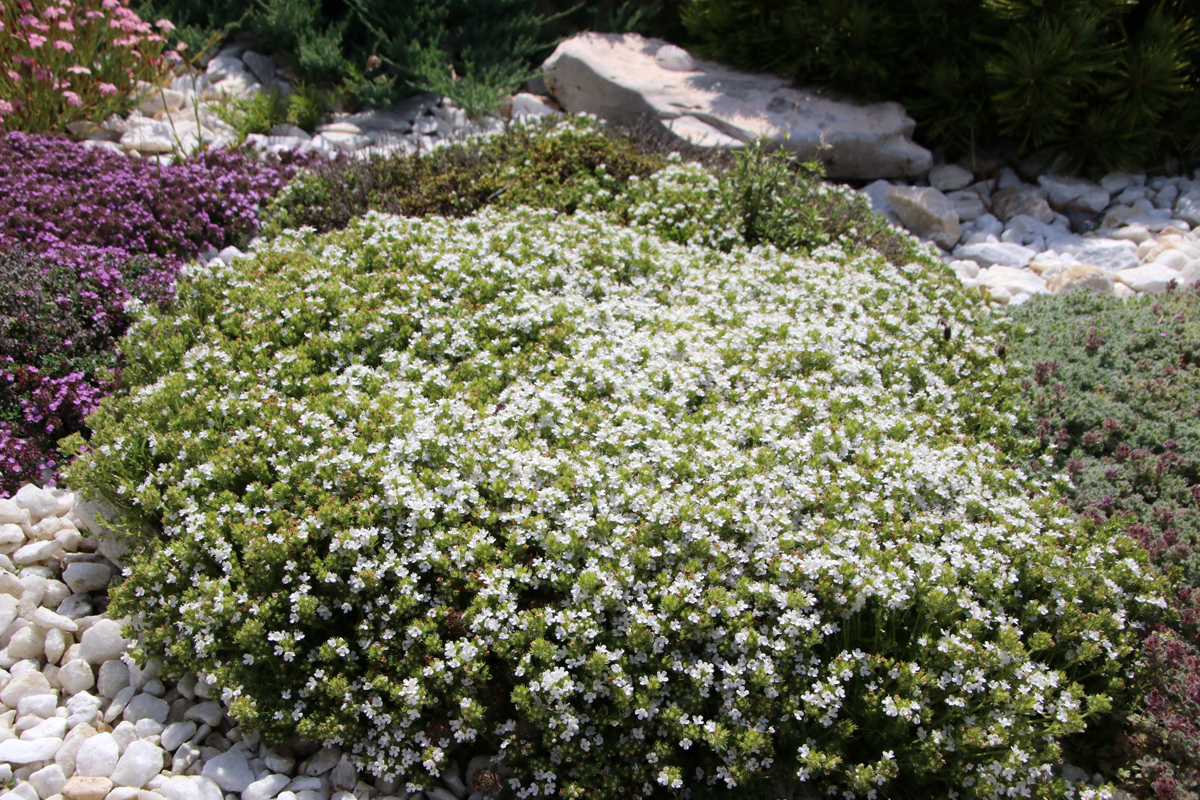
Creeping Thyme (Thumus ssp.)
These low-growing plants offer gardeners a wide range of heights, textures and flower colors. Most have scented foliage and will tolerate some foot traffic. As it grows, creeping thyme creates a dense, weed proof mat. For best results, grow these plants in well-drained, relatively poor soil. Flower colors can be pink, purple or white and are highly attractive to pollinators. The foliage is evergreen in mild climates and most types are winter hardy in zones 4-9. Look for: Breckland thyme (Thymus serphyllum) mother of thyme/wooly thyme (Thymus lanuginosus), golden thyme (Thymus citriodorus) and caraway thyme (Thymus herba-barona).
Creeping Golden Oregano (Origanum vulgare ‘Aureum’ or ‘Golden’)
This culinary herb, which is sometimes called golden marjoram, works well as a ground cover. Its fragrant leaves are brilliant yellow in full sun and lime green in partial shade. The plants grow 3 to 5” tall and can spread to a width of 12” or more. In all but the coldest climates, the foliage is evergreen. Creeping golden oregano is easy to divide in early spring, so you can spread it around to wherever you need a splash of color. The plants are drought tolerant and not bothered by deer or rabbits. Winter hardy in zones 4-9.
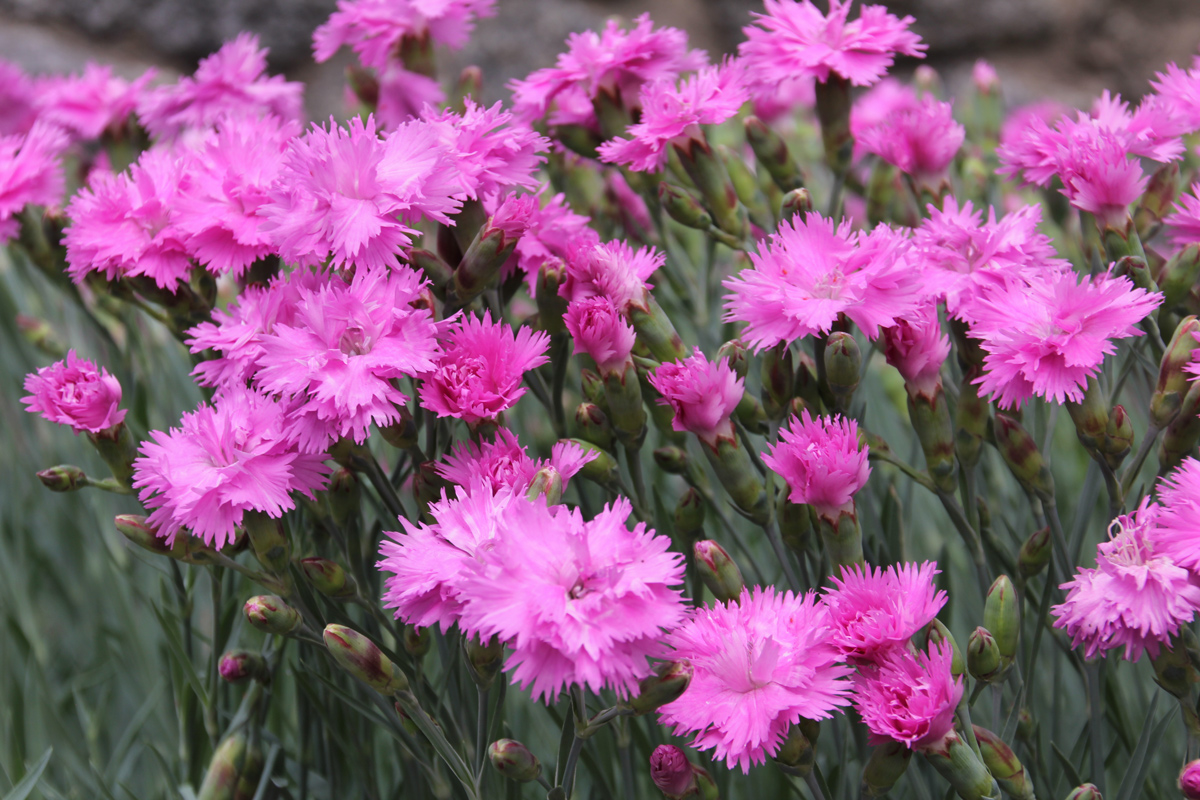
Creeping Dianthus (Dianthus deltoides and Dianthus gratianopolitanus)
These rugged perennials form a dense mat of shaggy, blue-grey foliage. Depending on the cultivar, the plants can be anywhere from 3 to 10" tall. The fragrant flowers bloom from early through midsummer and have wiry stems that are good for cutting. Dianthus require well-drained soil and it's important to avoid overwatering. Most cultivars are winter hardy in growing zones 4-9. Look for: ‘Arctic Fire,’ ‘Firewitch,’ ‘Tiny Rubies’, and ‘Sternkissen'.
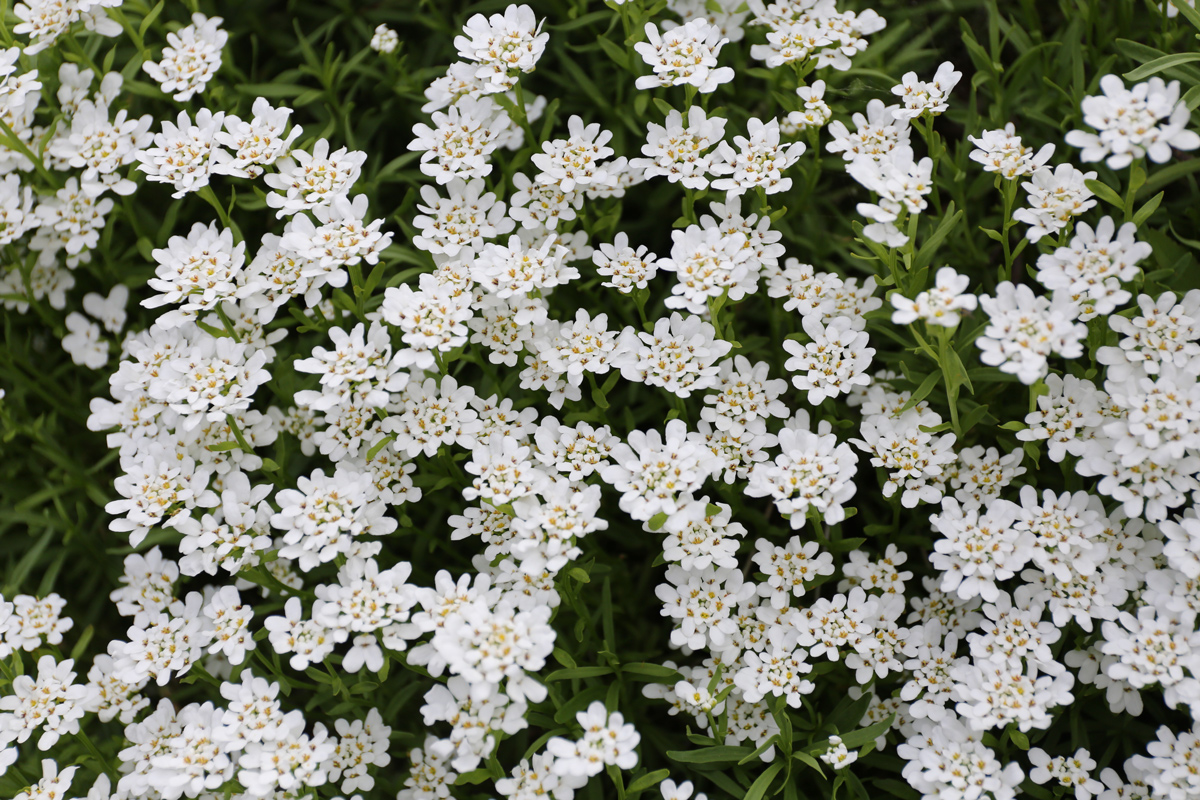
Candytuft (Iberis sempervirens)
This beautiful, under-used perennial covers itself with fragrant, pure white flower clusters from mid to late spring. The wiry, evergreen foliage has a cascading habit and grows no more than 6 to 8” tall. Shear off the flowers after they fade, and the plant's deep green foliage will provide all-season interest. A great plant for rock gardens or edging a stone wall or pathway. The flowers attract butterflies and other pollinators. Deer resistant. Hardy in zones 3-9.

Creeping Phlox (Phlox subulata)
This North American native plant is commonly known as moss phlox. It forms a dense mat of finely textured foliage about 6" tall. Fragrant, star-like flowers completely cover the plant in mid to late spring and are highly attractive to butterflies.
Creeping phlox can be grown at the front of a flower border or in rock gardens, yet it's also rugged enough to blanket steep, rocky slopes. Prefers well-drained soil with medium moisture (established plants will tolerate periods of drought). Deer resistant and winter hardy in zones 4-9. Flower colors can be pale pink, rose, lavender or white, plus bicolors. Look for: ‘Purple Beauty,’ ‘Drummond’s Pink,’ ‘Candy Stripe’ and ‘Eye Shadow.’
Catmint (Nepeta racemosa)
Nepeta is an easy, drought tolerant perennial that puts on a big show of color in midsummer. Shear the plants back after the first flush of flowers and they will bloom again during late summer. The grey-green foliage has an herbal fragrance that’s similar to oregano, and the flowers provide an abundance of nectar for pollinators. Though many nepetas are too tall for use as ground covers, dwarf cultivars grow just 8-12" high. Calamintha, a closely related species, has white flowers and is also an excellent pollinator plant. Look for: ‘Little Trudy,’ ‘Cat’s Pajamas,’ ‘Little Titch’ and ‘Cat’s Meow’.
Cranesbill (Geranium sanguineum)
Perennial geraniums have a mounding growth habit, maple-like leaves and small, 5-petaled flowers that bloom on and off all summer long. These are unfussy plants and they tolerate a wide range of growing conditions. In southern areas, they appreciate a little shade from neighboring plants. Heights range from 6” to 24”, so stick with the shorter cultivars if you want to use them as a ground cover. Look for: ‘Perfect Storm,’ ‘Biokova’, ‘Cambridge,’ ‘Ballerina’ and the species G. sanguineum striatum.

Lamb’s Ears (Stachys byzantine)
This heirloom perennial’s fuzzy, grey-green foliage makes it easy to recognize. Lamb's ears is an excellent ground cover and will tolerate hot, dry growing conditions. Deer and rabbits ignore it. If you have only grown the standard species, you may not be a fan of its sprawling stems and gangly, hot pink flowers. Instead, plant the cultivars 'Silver Carpet' or 'Helen von Stein,' which have a shorter, tidier growth habit and rarely flower.
If you have other sun-loving ground covers to recommend, please leave a comment so we can add them to the list. To learn more about bulbs and perennials that thrive in the sun, you may be interested in reading: 10 Easy Perennials for Sunny Gardens, Best Perennials for Late Summer Color and Summer Bulbs for Sunny Gardens.

